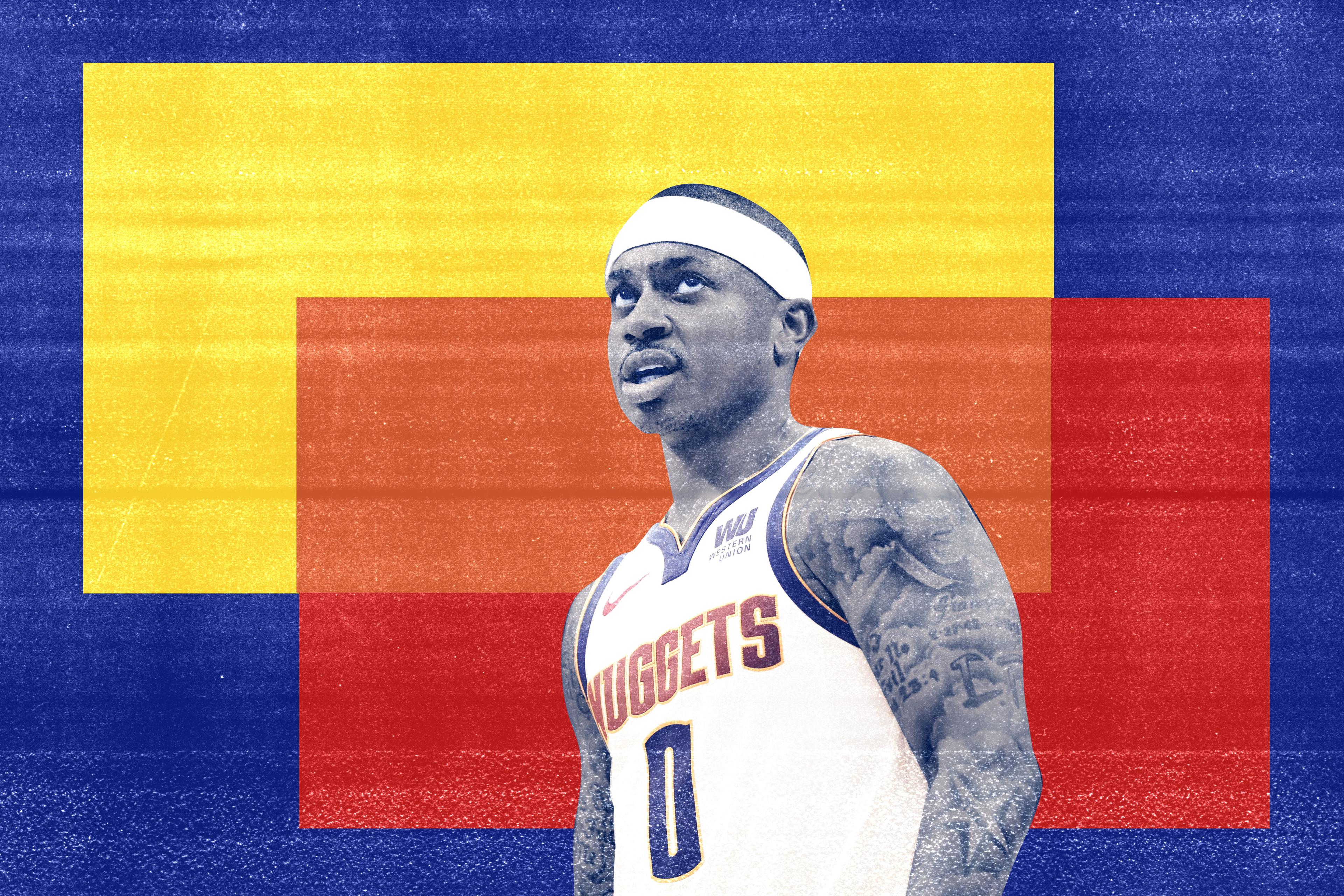
Just one week ago, Isaiah Thomas was speaking from a position of authority. Of all the players on the Nuggets roster, he is one of just four who has been to the playoffs.
After Denver’s March 6 win over the Lakers in Los Angeles, Thomas was asked how he was using his playoff experience to help the younger Nuggets. He said, “Not everyone is built for that stage, but I think our guys will be ready.” And when I asked Thomas how he was balancing his own interests with those of the team, he said, “When I’m out on the court, be who I am. I’m a scoring guard that makes plays, and I’m gonna always do that. If my opportunity grows, I’m gonna be able to do to provide more and do more out there.”
Only Thomas’s opportunity isn’t growing. In fact, it’s diminishing from even the 15 minutes a game he played in the nine games since his return from a hip injury. Head coach Mike Malone didn’t play Thomas on Tuesday night against the Timberwolves, and, following the game, Malone said he had a private conversation with Thomas about his role and his apparent removal from Denver’s rotation.
The Thomas experiment didn’t last long, and, really, it probably should have been even shorter. The Nuggets are a well-oiled machine that runs on a combination of chemistry, continuity, and young talent. They have a system that sets them up to be a premier offensive team. Thomas didn’t quite fit into that system: In the nine games he played, the Nuggets went 5-4, and he was minus-21 on the court. Denver’s net rating went from plus-5.4 to minus-5.6 when he played; offensively, they were 17 points per 100 possessions better without him. Thomas also took away minutes from Monte Morris, whose growth as a sophomore has helped keep the Nuggets afloat through injuries.
This season the Nuggets have prided themselves on ball movement, and Thomas has long been more of a ball-stopper. Denver has turned Nikola Jokic’s passing style into a modus operandi, leaning further into it as Jokic has evolved from a 41st overall pick to a pudgy basketball wizard. On a team like the scrappy 2016-17 Celtics, it was a blessing that Thomas was an effective high-usage player, but on a team like the Nuggets, that tendency is more of a curse. Before Denver’s game against the Lakers, Malone talked about how unless the team completes 300 passes in a game, it’s not playing “Nuggets basketball.” Before Thomas made his way back onto the court, Denver averaged 308 passes a game, good for a top-10 mark in the league. Afterward, that number dipped to 283, a bottom-10 mark. Given Thomas’s low minutes, there isn’t a direct correlation, but when he is on the court, the team’s 27 assists per game plummet to eight. In this system, Thomas seems like a roadblock, not a conduit.
This isn’t new for Thomas. He’s been told throughout his career that his size would prevent him from being a viable NBA player, and yet he has persevered. He dines on doubt. But he’s been dealt a cruel hand since he played through an injury in the 2017 playoffs for the Celtics before his trade to the Cavaliers. His Brink’s truck payday never came, and his playing time has now evaporated. Thomas is 30 and coming off an injury. Though he’s not done playing—or suiting up for the Nuggets, for that matter—the future seems bleak.
“I’m here to help as much as I can,” Thomas said after the Lakers game. “On the court, on the bench, as much as I can.” Denver should hope that sentiment doesn’t change, even as his minutes do. Maybe becoming a veteran seer for a playoff-bound team will be Thomas’s path from here on out. Maybe there’s a team out there that could use a presence and a bench scoring punch, but maybe there won’t be, given his struggles on a team that could use both of those things. Maybe, just maybe, this is the true beginning of the end. Good luck trying to convince him of that.